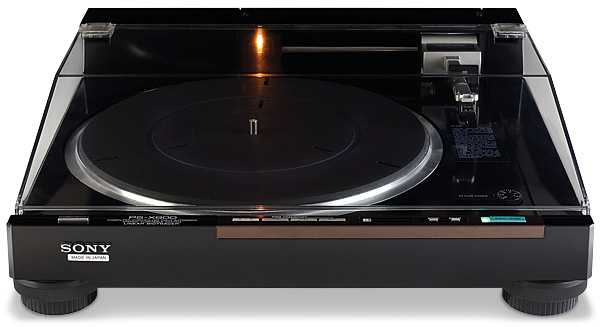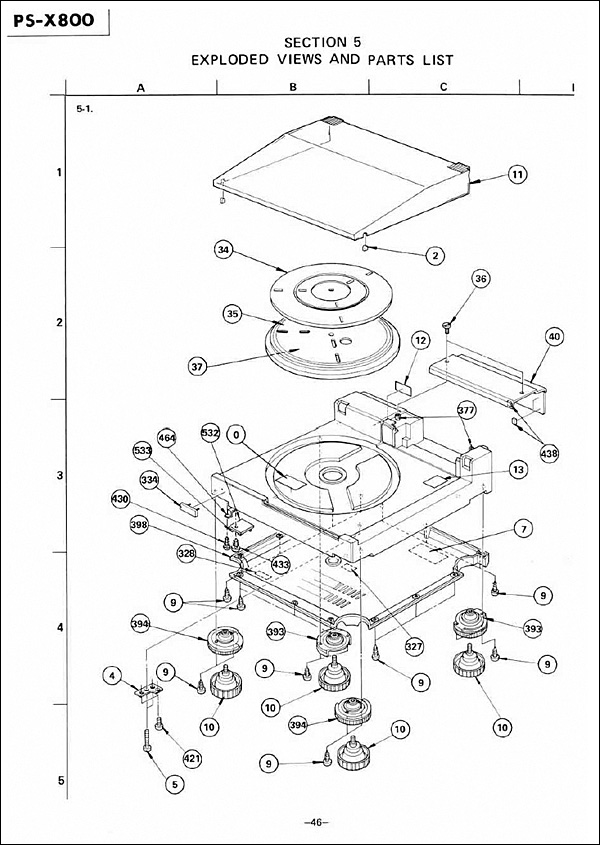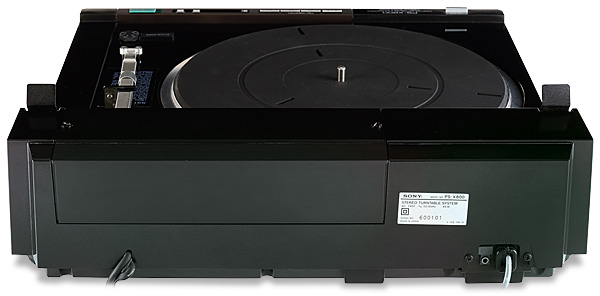Sony PS-X800 Turntable Page 2
![]() Tim Listens
Tim Listens
The sound of the PS-X800 is best described as 'engineered'. Just as with the Kenwood DP-1100SG CD player [HFN May '22], it is only really appropriate to critique this design on the grounds of personal taste, there being no obvious signs of corner cutting, production economy or unresolved loose ends in its construction. While some other turntables seem to have been optimised by following a 'try it and see' approach, the PS-X800 feels like the result of genuine and methodical research.

Smooth Talk
The predictable aspects of the sound are beyond reproach. The motor runs silently and consistently and, as a result, subjective speed stability is as good as you are likely to ever get from a record, the limiting factor being how accurately the hole has been punched in the middle. What is odd is the lack of bass, and the two-dimensional soundstage that the PS-X800 projects. These observations are based not only on the beautifully preserved example used for this review but the many others that have passed through my hands over the years.
The opening guitar chords of 'Talkin' 'Bout A Revolution' by Tracy Chapman, taken from her eponymous first album [Elektra 960 774-1], sound thin and jangly on the PS-X800 – as they do on many turntables – but the situation is usually redeemed as the bass rolls in after the first few bars of the song. This does not quite come off as planned with the PS-X800, as the weight and the warmth simply aren't there. Set that aside, however, and what is revealed is pinpoint detail and an unusual sense of smoothness, which isn't just the result of a soft top end. The delicate strumming of the guitar on 'Fast Car' is crystal clear, while there's a sense of texture many conventional turntables miss, although you'd only know that once you'd heard what Sony's creation can do.

Fiddling with the downforce dial as the record played confirmed what everyone knows already – that cartridges perform better the more firmly the stylus is held in the groove. Secure tracking keeps record and stylus wear to a minimum too. How much is too much? When the cartridge body scrapes along the disc is my preferred answer!
Sade's 'Paradise' [Stronger Than Pride; Epic 460497 1] gave another insight into the strengths and weakness of this fascinating design. Vocal clarity was exceptional and the tempo rock solid, but the presentation lacked the embracing ambience that makes this recording special. Repositioning the loudspeakers closer to the rear wall of my listening room cured much of the low-end roll-off, but it could not make up for the lack of front-to-back projection. This was a disappointment because the rest of the performance was of an undeniably very high standard.
The PS-X800 is something of an enigma. In simple terms it is outperformed by quite some margin by the best of its contemporary linear-tracking rivals, such as the cheaper Technics SL-10 and slightly more expensive B&O Beogram 8000. However, there is always something about the PS-X800 that hints at greatness, waiting to be revealed by a synergetic cartridge choice and/or some inspired selection of partnering equipment. On the other hand, it may be best to simply enjoy this turntable for the masterpiece that it is. It's certainly a deck I'm going to find difficult to let go.

Buying Secondhand
The PS-X800 is dauntingly complex and repairs are not straightforward. Wear in the two tiny belts that link the tracking motors to the arm mechanism is the most common concern. There is a lot to remove even to reach them, and doing so will inevitably result in the tension of the driving cord becoming loosened, so this has to be carefully re-laced afterwards. The tension of the belts is critical and in practice many of the sets offered as replacements are not suitable for the purpose. Sometimes the only suitable approach is to buy a larger selection of belts and see which ones work the best.
Resist Temptation
Careless removal of the platter can damage the magnetic paint, meaning the quartz-lock servo will operate erratically. There is little that can be done about this so the utmost care must be taken when working in this area. Where other faults are present the first thing to do is to check that all the supply rails are of the correct voltage and free from hum and noise. The temptation to try and adjust any of the multitude of pre-set resistors must be strongly resisted, as it just makes matters worse without solving the problem.

Finally, the SBMC plinth material is relatively soft so if you remove and replace the various screws seated in it too many times, or over-tighten them, you run the risk that their threads will strip. Similarly, the turntable's lid is not especially strong and can crack around the hinges if not treated carefully.
Hi-Fi News Verdict
Apart from the PS-B80, this was the most complex turntable Sony (and possibly any company) made. While it does some things exceptionally well, it could be better in other areas, but that does not mean it is not a very desirable object. Present day values make the costs of upkeep seem sensible in context, so the PS-X800 need not be feared as it once was, making it a good buy for the serious vintage enthusiast.
























































